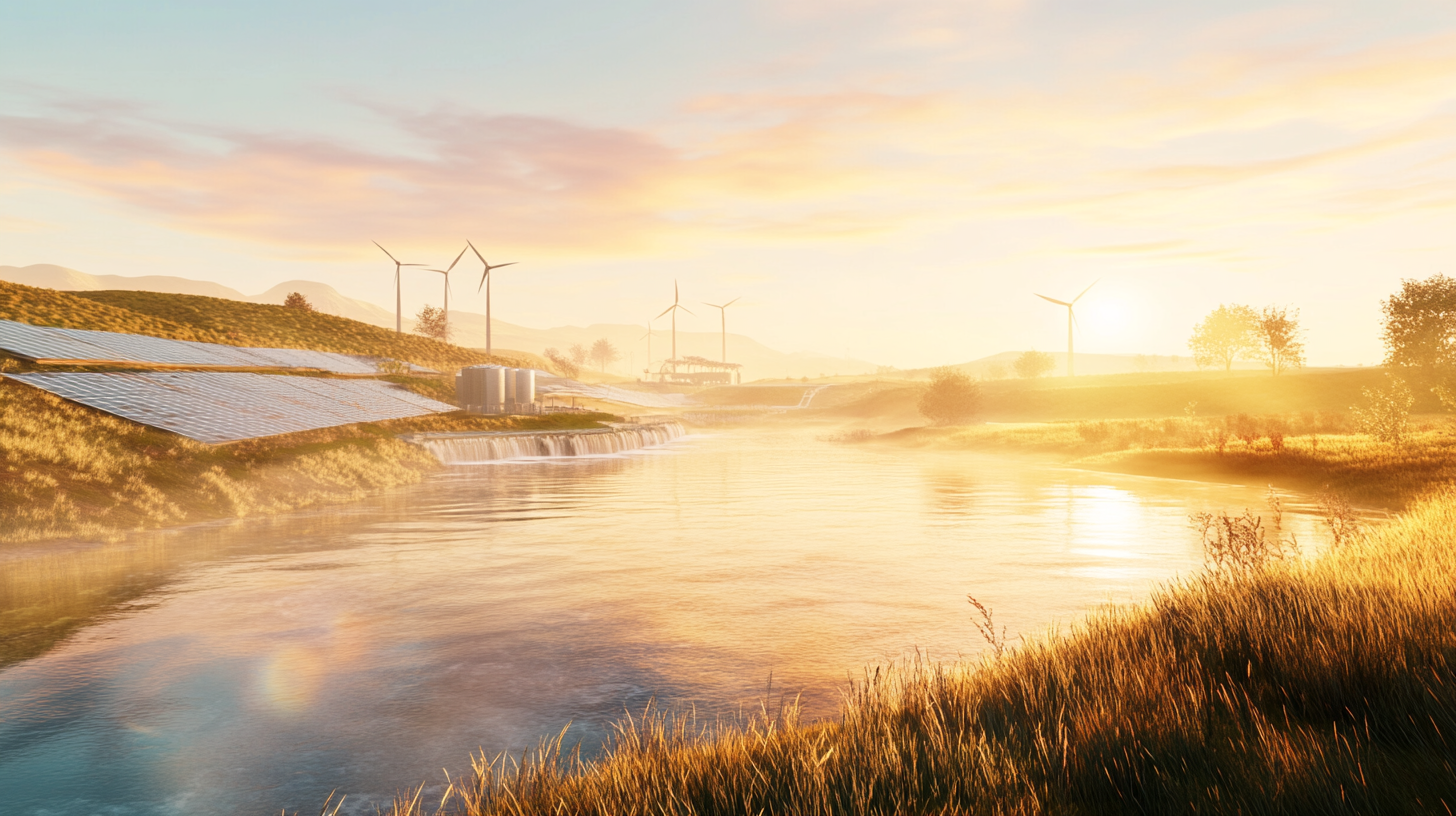
The hybrid power plant: From rain, wind and sunshine to the power outlet – Creative image: Xpert.Digital
Harnessing the power of nature: Hybrid power plants for a greener future
The future of the energy transition: Hybrid power plants as the key to sustainability
The energy transition presents modern societies with immense challenges while simultaneously offering enormous opportunities. Hybrid power plants, which combine various renewable energy sources such as solar, wind, and hydropower with battery storage, play a key role in this. These intelligent systems enable an efficient, reliable, and sustainable energy supply and contribute significantly to reducing CO₂ emissions.
The idea behind hybrid power plants
Hybrid power plants utilize the synergies of different renewable energy sources to balance fluctuations in electricity generation and ensure grid stability. Solar and wind energy, for example, complement each other perfectly: While photovoltaic systems produce a lot of electricity, especially during the day and in sunny months, wind turbines deliver high yields particularly in the evening hours and during windy seasons. The integration of hydropower and battery storage expands this concept by offering additional flexibility and storage capacity.
Advantages of combining multiple energy sources
Combining different technologies in a hybrid power plant offers numerous advantages:
1. Increased security of supply
Diversifying energy sources reduces dependence on individual resources. If one source temporarily fails or provides less energy, the others can step in.
2. Optimized network utilization
A shared grid connection point for multiple generation plants reduces the need for extensive grid expansion measures. This saves costs and minimizes the impact on the landscape.
3. Reduction of curtailments
Excess energy that would otherwise have to be curtailed can be temporarily stored in battery storage systems or used for hydrogen production.
4. Economic efficiency
Shared infrastructure and operations reduce investment and operating costs. Furthermore, hybrid power plants can benefit from various funding mechanisms.
The role of battery storage
Battery storage systems are the link that effectively connects the different energy sources in a hybrid power plant. They enable:
Load shift
Excess energy is stored and released again when demand is high.
Grid stabilization
Fast memory response times help to compensate for frequency fluctuations.
Integration into the energy system
Storage systems facilitate participation in the balancing energy market and increase the economic efficiency of the plant.
Application examples
Offshore wind farms with hydrogen production
In the North Sea, wind turbines are combined with electrolyzers to produce green hydrogen directly at sea.
Floating solar power on reservoirs
Photovoltaic systems are installed on bodies of water, for example on reservoirs of hydroelectric power plants, in order to use areas efficiently and reduce evaporation.
Wind and solar parks with large storage facilities
On land, facilities are being built that combine wind and solar energy with battery storage to ensure a continuous power supply.
Challenges and solutions
Despite their advantages, hybrid power plants face some challenges:
Regulatory hurdles
Legal frameworks need to be adapted to facilitate the integration of multiple energy sources and storage systems. For example, building over grid connection points should be permitted.
Financing and investments
The complexity of hybrid power plants requires innovative financing models and the trust of investors and insurers.
Technical Integration
Managing different technologies within a single system requires advanced management and control systems.
Possible solutions include
Adaptation of legislation
Incentives for the construction of hybrid power plants can be created through funding programs and legal adjustments.
standardization
Developing standards for planning, construction and operation facilitates implementation and financing.
Research and Development
Investments in research promote technological progress and cost reductions.
Its significance for the energy transition
Hybrid power plants are an essential building block for a sustainable energy future. They enable:
Decarbonization
The use of renewable energies significantly reduces CO₂ emissions.
Flexibility of the energy system
Combining different sources and storage options increases adaptability to fluctuating consumption patterns.
Economic development
New business models emerge, jobs are created, and regional value creation is promoted.
Technological development is progressing rapidly.
Artificial Intelligence and Digitalization
Smart control systems optimize the operation of hybrid power plants in real time.
Integration of sector coupling
The combination of electricity, heat and mobility enables holistic energy use.
International exchange of experience
Countries that already successfully operate hybrid power plants can serve as role models and share their experiences.
Innovative solution
The energy transition is more than just switching from fossil fuels to renewable energies. It requires a fundamental rethink of how we generate, store, and use energy. Hybrid power plants combining solar, wind, hydropower, and battery storage are a shining example of innovative solutions that harmoniously integrate technology, economics, and the environment. It is up to all of us – policymakers, businesses, and society – to seize this opportunity and set the course for a sustainable and secure energy future.
Suitable for:
